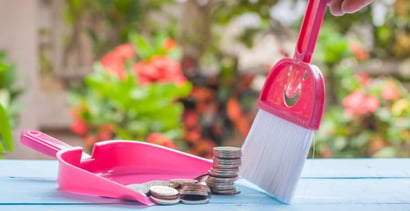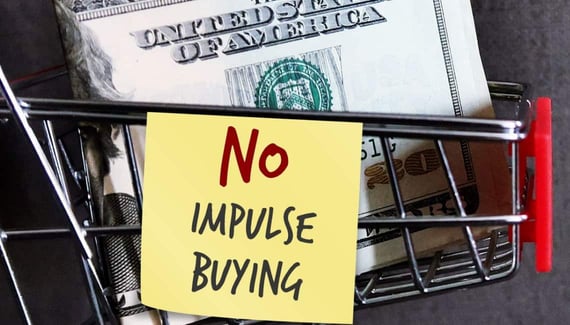
Thanks to rising interest rates and persistent inflation, Americans are struggling to make ends meet as they pile on debt. In fact, a recent TransUnion report found that credit card and personal balances have reached record highs due to these economic woes.
Although the outlook appears gloomy, taking charge of your finances is key to improving your outcome. So with a new season upon us, think about how you can put some of that spring cleaning energy into getting your financial house in order.
Here are five ways to spring clean your finances when you’re in debt.
1. Reorganize Your Budget
Setting up and following a budget ensures your money goes where you want it to each month. Without a well-thought-out spending plan, you’re likely to waste your hard-earned dollars on meaningless purchases and expenses without realizing it.
Even if you already have a budget, refreshing and rebalancing it is crucial now as prices on daily essentials continue to rise and have likely thrown your plan out of wack.

Use a budget worksheet to organize all your expenses and regular purchases in one place, so you can keep track of your spending each month. This ensures you stick to your plan and allows you to make adjustments as needed.
2. Dust Away Interest Fees
Rising interest rates are making it more expensive than ever to carry a balance on your credit card. If you’re living paycheck to paycheck, it may feel impossible to put aside extra funds to pay off your debt. But that doesn’t mean you have to throw away money each month on high interest fees.
Instead, move your balance to a 0% balance transfer card that waives interest for up to 21 months. This move will buy you more time to make smaller payments without interest piling up to save you more money over time and help you pay off debt faster.
Take time to review your options. Here’s a list of balance transfer cards to help you find the best option for your financial needs and credit rating. Note that 0% offers generally require good to excellent credit for approval, though you may be able to find good low-rate cards for subprime credit from a credit union.
3. Spruce Up Savings
While paying down debt should be a top priority, do not sacrifice savings to achieve this goal. Keeping cash in a separate account is necessary to get you through an unexpected financial emergency. Otherwise, you will have to rely on a high interest credit card, and this can create a vicious debt cycle.
Prioritizing savings while you pay down debt and aim to stash away at least one month of living expenses to start. You can always build from there. Setting up automatic transfers and increasing those contributions over time will keep you on track to meet your savings goals.

But don’t overlook where you put your savings — high-yield online savings accounts pay you much more than traditional banks. For example, Bread Savings offers a competitive 4.5% annual percentage yield (APY), helping your savings grow faster.
4. Purge Useless Services and Fees
Most people overlook wasteful spending on their monthly bills. Spend time scrutinizing your recurring expenses and comparing competitor rates, as you may be able to save more by switching providers or canceling services you no longer need.
For instance, this recent study found that 90% of mobile users waste money on unnecessary unlimited data plans and could save by simply opting for a lower-tiered data plan that meets their actual usage rates. Another report from Bankrate found that 1 in 4 checking account holders are paying fees every month for failing to meet a certain minimum balance.
Considering there are plenty of free checking accounts available or those that offer require no minimum balance thresholds, spending just a few minutes shopping around can result in quick savings.
5. Polish Spending Habits
As you work toward reducing your debt load, don’t ignore the poor spending habits that got you there in the first place. If you’re among the millions of Americans who spend around $314 each month on impulse purchases, it’s time to tame and eradicate this compulsive behavior.

Spend some time thinking about the reasons behind your impulse purchases. Identifying spending triggers makes it easier to avoid them in the future. If you can’t resist a sale, for instance, turn off app notifications and unsubscribe from retail newsletters.
Those who can’t walk into Target without blowing hundreds of dollars on excessive merchandise should avoid walking into the big box store altogether. And, if you often find yourself tapping the buy button on Amazon without much thought, it’s time to delete your payment and shipping information so you can’t make purchases so easily. Instead, shop with a list and stick to it, and only look for deals and coupons when you need them.




